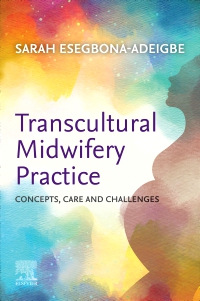
Transcultural Midwifery Practice - Elsevier E-Book on VitalSource, 1st Edition
Elsevier eBook on VitalSource

Now $21.59
With increasing diversity in the UK’s childbearing population and ongoing racial disparities in maternal health outcomes, this new title will help both students and practising midwives provide care that meets the needs of childbearing women and birthing people from different cultural backgrounds.
The book lays the foundations for exploration of the many manifestations of transcultural care and how it relates to women, their families and societies. It covers everything that midwives need to know in order to be sensitive to and aware of cultural differences, needs and preferences during pregnancy and childbirth, ultimately enabling them to provide better care for all.
Written by senior midwifery lecturer Sarah Esegbona-Adeigbe, an experienced practitioner in ethnic minority health, high risk pregnancy and the socio-cultural context of women’s healthcare, Transcultural care in midwifery practice is destined to become a core text in midwifery courses.
-
- Covers main cultural competency models and how to apply cultural competency and cultural safety concepts to individual women
- Provides an overview of different cultures and religions to support cultural awareness and sensitivity
- Addresses barriers and ethical issues in midwifery care and how to mitigate them
- Packed with scenarios, case studies and activities to support learning
- Reflective activities in each chapter to reinforce cultural concepts
-
1. Transcultural concepts in midwifery
2. Transcultural midwifery care
3. Transcultural communication
4. Challenges in transcultural midwifery
5. Ethical issues in transcultural midwifery
6. Stories from practicing midwives and childbearing people


 as described in our
as described in our 